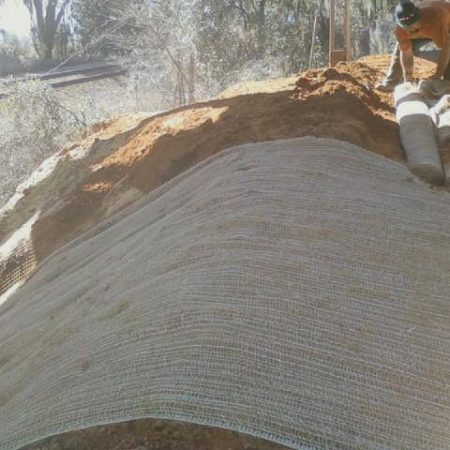Lafayette Heritage Trail Bridge Bank Stabilization involved the installation of erosion control blankets and dormant native plant material on a steep slope.
We installed live stakes of elderberry and rivercane around the big oak stump that is directly underneath the bridge. We then encased the whole thing with geotextile, fill dirt and photodegradable double sided coconut fiber blankets. The oak stump will rot out over the next few years and the elderberry will continue to root in underneath it and form a mass of roots to hold the soil in place.
After finishing the slope, it was seeded with ryegrass for temporary stabilization while our native plants established. We broadcast fertilizer before we installed the blankets.
We planted Sida acuta as well as switchgrass to provide stabilization for the first two years of growth until woody species were able to establish. There are places along the bank where the foot traffic from fishermen and hikers has taken a toll on the Sida growth and is leading to erosion in this area. However, the Sida growth on the right side of the bridge is thick, as there was no foot traffic on that side.
We planted rice button asters rhizomes along the edge of the slab of the bridge, not knowing they were planning to add several inches of chips. These made their way through the layer. They are mat-forming and will continue to creep out. The root mat should help control sediment.
The elderberry live stakes that we installed throughout this clay bank have completely claimed the entire slope from top to bottom.



























